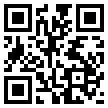![]() Same Day Delivery Unavailable From 23 Apr - 1 May
Same Day Delivery Unavailable From 23 Apr - 1 May
GET THE APP VIA

or
DOWNLOAD TO ENJOY $5 OFF (PROMO CODE: TAKE5OFF) YOUR FIRST PURCHASE. T&C APPLIES
Discover the full benefits of the Eu Yan Sang Singapore app!![]() Same Day Delivery Unavailable From 23 Apr - 1 May
Same Day Delivery Unavailable From 23 Apr - 1 May

DOWNLOAD TO ENJOY $5 OFF (PROMO CODE: TAKE5OFF) YOUR FIRST PURCHASE. T&C APPLIES
Discover the full benefits of the Eu Yan Sang Singapore app!